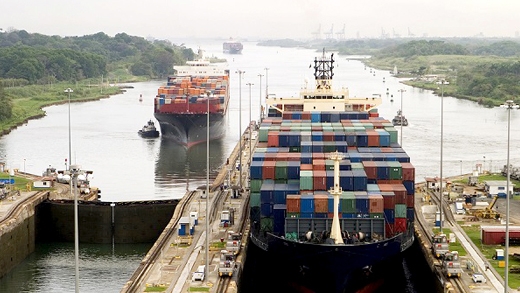Panama is a driver of economic growth in Central America and the Caribbean. The capital, Panama City, is the region’s major financial and transportation hub, largely due to the Panama Canal. It is also highly vulnerable to natural hazards, such as floods, landslides, earthquakes, windstorms, wildfires and storm surges, which threaten the country’s infrastructure and economic assets.
The Government of Panama has been working with the World Bank, GFDRR, and the DRFI Program since 2010 to develop and implement a strategy to effectively manage the financial impact of natural disasters. Leveraging the international experience of these institutions on disaster risk financing, Panama has been able to carry out a thorough public sector reform. A dedicated unit was established within the Ministry of Economy and Finance to inform public policies on disaster risk management and engage relevant stakeholders.
Context
A high proportion of the low-income population in Panama lives in areas most exposed to natural hazards, which feature poorly designed structures. The inefficient enforcement of national and local land use regulations, uncertainty about compliance with building codes, rapid demographic growth, and unplanned urban and industrial expansion are key drivers contributing to the increased vulnerability of Panama. At the same time, the country has seen large amounts of foreign direct investment, infrastructure and transportation systems have been built, and new housing and tourism projects were developed. Urban areas where trade and financial services are concentrated account for 43% of GDP and over 80% of the country’s total exports. The Panama Canal has been expanded to further open the country to trade. Damages to the Panama Canal alone could disrupt international transportation networks and negatively impact further growth of Panama’s economy.
Approach
Following a torrential rainfall in December 2010 that caused a declaration of national emergency, Panama undertook a series of efforts to better understand its level of disaster risk and develop strategies to become more resilient against disaster shocks. In November 2014, a Presidential Decree setting out a National Strategic Framework for the Financial Management of Disaster Risk was approved, making Panama the first country in the world to enact such a law.
The adoption framework represents the culmination of a series of public reforms, consultations, and studies undertaken by the Government of Panama in recent years. These efforts have created a strong legal mandate for establishing a financial management strategy that addresses natural disasters.
The framework is forging a nationwide consensus to pursue evidence-driven disaster risk reduction, improve budget planning and invest in disaster risk management. This also includes looking at ways to increase financial resilience. GFDRR helped Panama early on in finding ways to improve decision-making and risk management. For example, GFDRR made open-source, multi-hazard disaster risk analysis tools available to strengthen the capacity of Panama’s policymakers to integrate risk information into the development planning process.
Lessons Learned
Collaboration is critical to provide clients with comprehensive solutions for disaster risk financing. This project is a result of continuous collaboration across the World Bank Group and external partners to foster financial resilience to natural hazards. World Bank partners include the United Nations Office for Disaster Risk Reduction (UNISDR) in the Americas, the Inter-American Development Bank (IADB), the International Monetary Fund (IMF), and the Central American Integration System for Natural Disaster Prevention (CEPREDENAC). This approach has been essential in customizing the Strategic Framework to Panama’s specific needs, such as establishing a dedicated unit within the Ministry of Finance. This enabled the country to effectively facilitate the decision-making process around disaster risk management initiatives as previously fragmented responsibilities have become centralized.
A national policy promoting integrated disaster risk management is crucial to spur reforms. Integrated solutions acknowledge that disaster risk financing and insurance is only one pillar of a country’s national disaster risk management framework and should be complemented by risk analysis, risk reduction, disaster preparedness, and recovery and reconstruction after disasters. This latest national policy contained a component on financial management of natural disasters that was crucial for sustaining the country’s commitment to formulate and adopt the Strategic Framework despite changes within the Government following an election.

